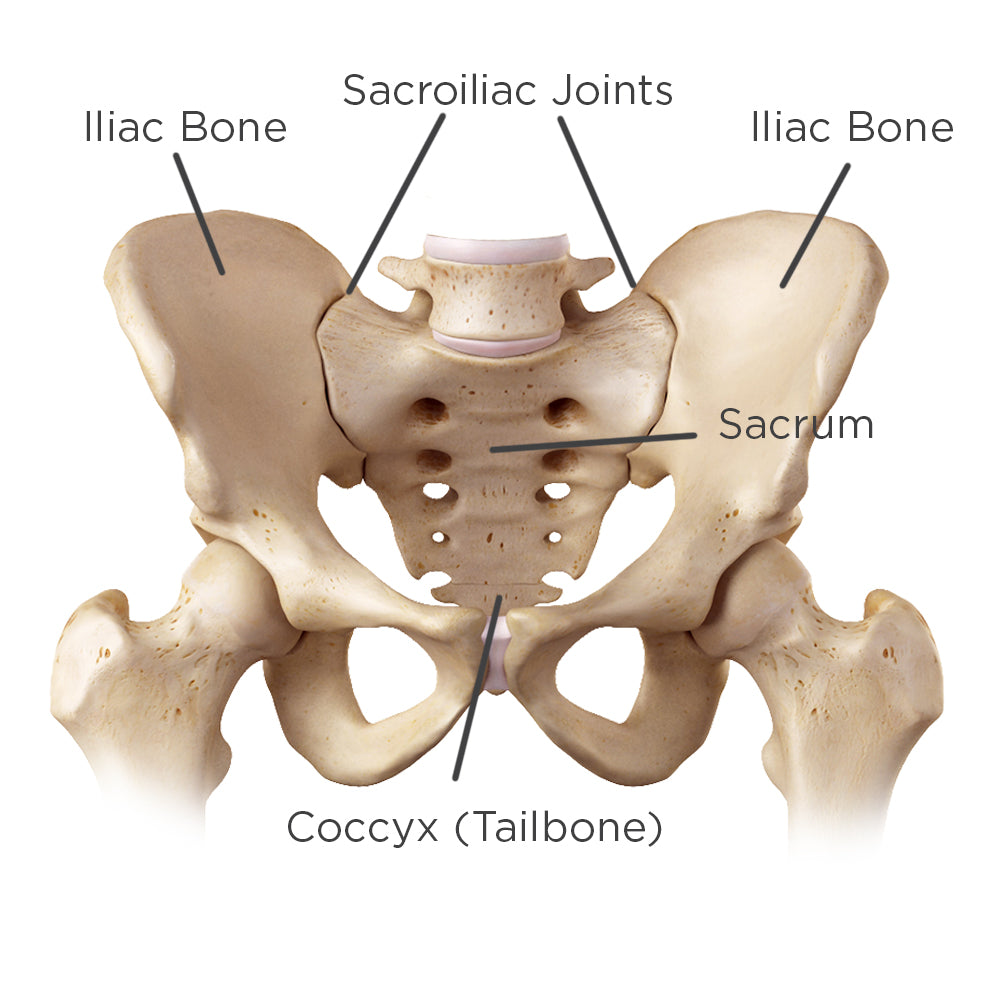Know The Facts About SI Joint Pain: The Most Common Causes & Symptoms
The sacroiliac joints are the ligaments that connect the right and left iliac bones (which make up the pelvis) to the sacrum. The sacrum is the triangular-shaped lower part of the spine that is composed of the lower five fused vertebrae. Unlike most of the spine and other joints, the SI joints are not supposed to be overly mobile, which can lead to many problems arising when they deviate from the normal range of motion.

What Causes SI Joint Pain?
These joints are subject to high amounts of stress as they support the entire weight of the upper body when you’re standing upright. This can wear on the protective and shock-absorbing cartilage of the joints. The resulting damage to the cartilage is often at the root of SI joint pain symptoms.
There are a number of causes of SI joint pain, with the most common being degenerative arthritis or osteoarthritis. This occurs naturally over time as one of the many joys of growing older.
Other conditions that cause inflammation of these joints include:
- Ankylosing spondylitis
- Rheumatoid arthritis
- Gout
- Psoriasis (an immune system problem)
SI joints that are overly mobile or that do not move enough are also thought to be SI joint pain causes. This is the case when pregnancy brings on SI joint dysfunction symptoms. Around 50%-80% of pregnant will deal with lower back pain more specifically a result of your si joints. Associated hormone changes cause the connective tissues of the body to relax. While this is well and good from a child-bearing standpoint, it is not ideal for the lower back because it allows the SI joints to move more than they should. Fortunately, there are many ways to deal with si joint pain while pregnant!
Other causes of sacroiliac joint pain include an abnormal gait. This can stem from have differing leg lengths or pain in the knee, foot problems, hip pain, etc. Being bow-legged, also referred to as knock-kneed or having some other condition such as drop foot can also increase your risk of developing SI joint dysfunction.
Trauma to the back can also cause troubles with the lower back both in terms of cartilage damage and inflammation or abnormal mobility of the SI joint. This includes events such as a hard fall onto your buttock region.
What Are Common Sacroiliac Joint Pain Symptoms?
As you can see, in some instances, sacroiliac joint pain is a symptom itself. But when looking at SI joint dysfunction symptoms, specifically, the primary effect of the condition is pain and stiffness in the lower back on either side of the spine where the two SI joints are located.
Sometimes, this pain radiates to the hip, groin, abdomen, testicles or the outer side of the leg, though such symptoms of SI joint pain typically remain above the knee.
All of this can make it difficult to do things such as rolling over in bed, putting on your shoes and stiffness when getting up after sitting or lying down. The aching pain in the back may become more evident after sitting in a car for an extended period of time. In addition, pain also may be more intense in the morning after you wake up and subside throughout the day.
But on the bright side, there are numerous ways to say goodbye to your si joint discomfort. For example, stretches, yoga poses and strengthening exercises help you recover and reduce the tension that is placed on your si joints. Check out our blog for ideas of the best exercises for si joint pain and some to avoid!
Another way to help ease your irritation in these joints is by wearing a si joint brace. There are a number of lumbar braces at a relatively low price that can help ease these sacroiliac joint pain symptoms so that you can get on with your life! These braces help to provide support and stabilization to your joints to help prevent them from rotating too much.










